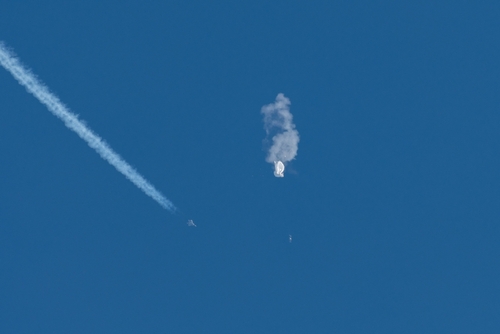The unexpected breakaway of a U.S. Customs and Border Protection surveillance balloon from South Padre Island, Texas, has prompted a thorough investigation into safety protocols. As the helium-based aerostat traveled approximately 600 miles to Hunt County near Dallas, questions about the reliability of border security measures in extreme weather conditions arose.
Balloon’s Unexpected Journey
A high wind event caused the Tethered Aerostat Radar System (TARS) to detach from its position in South Padre Island. Gusts reaching 75 mph were recorded, leading to the balloon’s northeast trajectory. Once airborne, CBP lost contact with the aerostat, crucial for monitoring low-altitude aircraft at the southwest border.
U.S. Customs and Border Protection has found its lost surveillance blimp, Argos, which broke free from its South Padre Island site.
The 200-foot-long aerostat, which weighs as much as a small car, flew uncontrolled for nearly 600 miles across the state. https://t.co/GtWdYFAjQi pic.twitter.com/Oh7oZXbK8c— San Antonio Express-News (@ExpressNews) March 5, 2025
The balloon’s journey ended in Hunt County, where Quinlan Fire and Rescue discovered it. As onlookers gathered, confusion surrounded the massive object. “All the neighbors were over there. Nobody knew what it was,” shared resident Clay Hinton.
Importance of TARS in Border Security
The TARS balloon is essential to CBP’s operations, detecting suspicious air traffic along the border. Despite being a small part of the system, its role in identifying nearly half of all suspect targets annually underscores its importance. The TARS unit comprises a helium-filled upper chamber and a pressurized air lower chamber, engineered to withstand moderate conditions.
The Tethered Aerostat Radar System is a helium balloon that can lift a Lockheed Martin L-88 radar up to 4.6 km altitude, providing ground surveillance 370 km in all directions.
As this @xkcd reminds us: https://t.co/ByLgLfAxz1 pic.twitter.com/026eZTSSyw
— ToughSF (@ToughSf) March 4, 2025
“I was like, oh, OK, it’s not just a tarp or anything. That’s something!” Hinton remarked, highlighting the aerostat’s striking presence when discovered.
Combined federal and local efforts are underway to comprehend how the weather disrupted the balloon’s tether, examining every aspect of the incident to prevent future occurrences. Meanwhile, the National Weather Service continues to issue alerts, warning that severe weather may escalate fire risks across Texas.
Evaluating and Improving Safety Measures
CBP, alongside various federal and local agencies, has conducted an in-depth examination of what failed during the severe weather event. Enhancing security protocols and strengthening aerostat resilience are vital to avoiding similar accidents. The incident highlights the necessity for more robust infrastructure to cope with unpredictable weather patterns.
Conclusions focus on ensuring the safety of personnel and property while maintaining strong border surveillance capabilities. These steps will be instrumental in reinforcing the TARS program and comprehensive national security strategies.
Sources:
https://www.yahoo.com/news/us-surveillance-balloon-breaks-free-201031267.html
https://apnews.com/article/border-patrol-balloon-breaks-loose-texas-449bbea9884109bdb777d6eb2ee150aa

